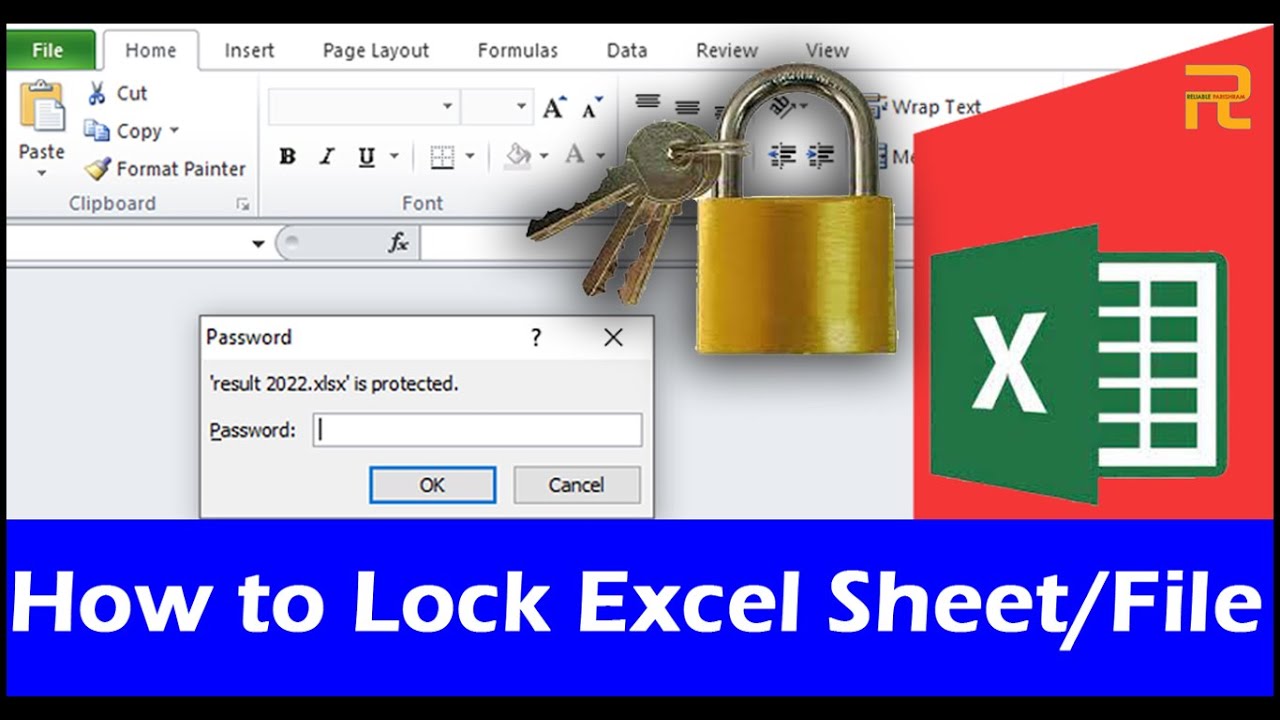5 Ways to Lock Excel Sheets from Deletion

Protecting your Excel spreadsheets from unintended deletion can be crucial for preserving important data, especially in environments where multiple users access shared files. Here, we delve into five effective methods to lock Excel sheets from deletion, ensuring your work remains secure and intact.
1. Using Sheet Protection

One of the simplest yet most effective ways to prevent users from deleting sheets in Excel is by employing the built-in sheet protection feature:
- Open your Excel workbook: Launch Excel and open the workbook where you need to protect the sheets.
- Select the sheet you wish to protect: Click on the tab of the sheet you want to lock.
- Go to the ‘Review’ tab: This is located at the top of Excel’s ribbon.
- Click on ‘Protect Sheet’: From the options that appear, you can set different permissions:
- Choose what users can do, like selecting cells, formatting, or entering data.
- Most importantly, ensure that the ‘Delete sheets’ option is unchecked under ‘Allow all users of this worksheet to’.
- Set a password: You can optionally add a password for added security, which users will need to unprotect the sheet.
- Confirm the protection: After setting your preferences, hit ‘OK’.
2. Workbook Protection

Extending beyond individual sheets, protecting the entire workbook adds another layer of security:
- Under the ‘Review’ tab: Click on ‘Protect Workbook’.
- Choose ‘Structure’: This prevents changes to the structure like adding, moving, or deleting sheets.
- Use a password: Like sheet protection, you can opt to set a password here.
This method ensures that no structural modifications can be made to the workbook, thus indirectly preventing sheet deletion.
3. VBA Macro for Sheet Deletion Prevention

For those comfortable with VBA, creating a macro can provide a high level of control over sheet manipulation:
- Open the VBA Editor: Use the shortcut Alt + F11 or go to ‘Developer’ tab and select ‘Visual Basic’.
- Insert a new module: Right-click on any of your VBA project’s components, select ‘Insert’ > ‘Module’.
- Enter the following code:
Sub ProtectAllSheets()
Dim ws As Worksheet
For Each ws In ThisWorkbook.Sheets
ws.Protect Password:=“YourPasswordHere”, DrawingObjects:=True, Contents:=True, Scenarios:=True
With ws
.EnableOutlining = True
.EnableAutoFilter = True
End With
Next ws
End Sub💡 Note: This code should be used carefully as it will lock all sheets in the workbook with the same password. Ensure you remember this password.
4. Restrict User Access

If the workbook involves sensitive data or specific permissions, you might consider restricting access to edit features:
- Share the workbook: Go to ‘File’ > ‘Share’ > ‘Share With People’.
- Set permissions: Here, you can choose whether users can edit, view, or only comment on the workbook.
- Use ‘Can View’ only: Restrict users to viewing mode to prevent any modifications, including sheet deletions.
5. Read-Only Mode

If absolute security is not needed but still you want to prevent accidental changes, saving the Excel file in read-only mode can help:
- Save As: Go to ‘File’ > ‘Save As’.
- Select ‘Tools’: Next to ‘Save’ button, you’ll find ‘Tools’.
- Choose ‘General Options’: From the dropdown, set a password to open or modify the workbook.
- Check ‘Read-Only Recommended’: This will prompt users to open the file as read-only.
By implementing these five methods, you can significantly reduce the risk of accidental or unauthorized deletion of sheets in your Excel workbook. Each approach offers varying degrees of protection, tailored to different needs and user environments. From basic sheet protection to utilizing VBA for a more customized solution, these strategies ensure your data remains secure and accessible only to those with permission.
Can I protect only specific sheets in a workbook?

+
Yes, you can protect individual sheets by following the steps for sheet protection. This allows you to control access at a granular level, permitting or restricting changes on a per-sheet basis.
What happens if I forget the password used for protection?

+
If you forget the password, Excel will not allow you to unprotect the sheet or workbook. There are no built-in methods to recover a forgotten password; however, some third-party tools claim to recover or remove passwords, though this can be risky and not always successful.
Can protected sheets still be deleted by someone with edit permissions?

+
No, if the sheet protection includes the ‘Delete sheets’ option unchecked, even users with edit permissions won’t be able to delete protected sheets. However, they might still be able to move or modify the workbook’s structure if workbook protection isn’t applied.



